Digital Audio Workstations (DAWs) are the cornerstone of modern music production, offering an indispensable array of tools for recording, editing, mixing, and mastering audio.
If you’re a musician or producer, finding the right DAW can significantly enhance your creative process. You might use Windows but have your eye on Logic Pro. However, this was built by Apple explicitly for macOS.
In this article, I’ll help you find a Windows-friendly DAW comparable to the acclaimed Logic Pro. We’ll delve into their key features, system requirements, and who specifically they’re suited to, ensuring you make an informed choice when searching for Logic Pro for Windows alternatives.
In a hurry?
Here are our top three Logic Pro alternatives:
| Cubase Pro 13 | Includes a massive range of instruments and FX to be used across an unlimited number of audio and MIDI tracks. | Check the current price |
| Pro Tools Ultimate Perpetual License | Familiar layout with unrivalled 32-bit floating 192kHz audio resolution. | Check the current price |
| PreSonus Studio One 6.5 | Customisable work environment with drag-and-drop functionality with Dolby Atmos support. | Check the current price |
How to use Logic Pro with Windows
The flagship audio product of Apple, Logic Pro is loved for its sophisticated features, concise interface, unique Drummer function, and its range of included FX, virtual instruments, and creative sampling and composing tools. However, its exclusivity to macOS limits who can use it.
Although Logic Pro isn’t natively compatible with Windows, there is a workaround – using an emulator like VirtualBox or by building a Hackintosh computer.
Despite the workarounds, it’s important to remember there are risks. Both solutions are not only technically complex to set up but also straddle a fine line between legality and security. There’s a risk of encountering viruses or other malicious software, not to mention potential legal and ethical issues related to using software in ways not intended by its creators.
Plus, the performance of Logic Pro on a non-native Apple machine could be compromised, making the seamless workflow and user experience Logic Pro is known for, redundant.
Given these challenges, it’s safer and more practical to opt for a different DAW that’s designed for Windows. Once you find a DAW that aligns with your workflow and creative processes – and you’ve had a period of adapting – you’ll find that alternatives offer comparable functionality and can be just as effective for your production.
Best Logic Pro Alternatives
1. Cubase Pro 13 – The best overall alternative DAW
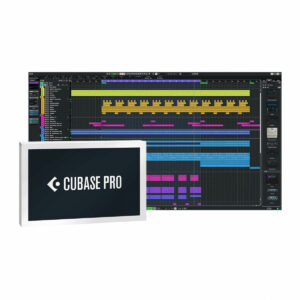 System Requirements
System Requirements
- Operating system: 64-bit Windows 11 (version 22H2 or higher) and 64-bit Windows 10 (version 22H2 or higher)
- Processor: Intel Core i5 (4th Generation) or AMD Ryzen
- RAM: 8GB
- Disc space: 75GB
- Resolution: AMD R or RX series and later or NVIDIA Series 700 and later – 1440 x 900 (at 100 UI scaling)
Pros
- Composition tools Chord Assistant and Scale Assistant aid with music theory
- Award-winning 64-bit floating point 192kHz audio quality
- Includes an impressive range of FX and instruments as stock
Cons
- Less optimised CPU may lead to unexpected crashing projects
Cubase Pro 13 is arguably the best overall Logic Pro alternative for Windows users thanks to its familiar layout, interface, and comparable-quality features and included instruments/FX. This powerhouse DAW caters brilliantly to both beginners and seasoned professionals, offering a breadth of features that streamline music production.
With its customisable workspaces, you can tailor the environment to your liking, enhancing productivity and creative flow.
One of the standout features of Cubase Pro 13 is its MIDI Retrospective Recording, which ensures that not a single note is missed, even if you forget to hit record. This, combined with the innovative AudioWarp Quantize panel, allows for seamless time-stretching and pitch-shifting, providing unmatched flexibility in audio editing.
Better still, Cubase Pro 13’s advanced Chord Pads and Chord Assistant tools are invaluable for songwriters, simplifying chord progression creation and music theory. The DAW also boasts a vast online community and a wealth of tutorials, making it easier for newcomers to get up to speed.
2. Pro Tools Ultimate Perpetual License – The best for audio editing and mixing
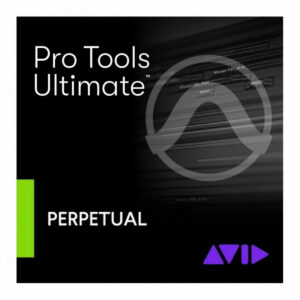 System Requirements
System Requirements
- Operating system: Windows 10, 11 (22H2) (64-bit)
- Processor: 64-bit Intel Core Processor (i3 2GHz or faster recommended)
- RAM: 8GB
- Disc space: 15GB
- Resolution: 1920 x 1080
Pros
- Excellent integration for post-production with video projects
- Industry-standard audio editing with “Elastic Audio” and “Smart Editing” tools
- Premium-quality FX included to mix to a professional standard
Cons
- No VST support for smaller developers who don’t offer AAX compatibility
An industry standard for a reason, Pro Tools Ultimate is the best Logic Pro alternative for producers working with complex recording sessions, mixing, and post-production work. Esteemed for its robust sound engine and unrivalled stock plugins, Pro Tools Ultimate caters to professional sound engineers and producers who demand the highest audio fidelity and editing possible.
A familiar and similar layout to Logic Pro, Pro Tools plants its feet firmly in the “digital mixing console”. They both feature a fantastic range of audio editing tools, MIDI integration, and surround support but where Pro Tools differs is the audio quality and processing power. A key to its acclaim is the unparalleled audio quality and the ability to handle up to 192 audio tracks simultaneously.
Taking the project power further, Pro Tools Ultimate’s Cloud Collaboration opens the door to seamless remote projects, enabling artists and producers to work together from anywhere in the world.
Whether Pro Tools Ultimate is the DAW for you could potentially come down to cost. It’s the most expensive DAW available and while it does boast a lot for your money, it’s worth serious consideration before purchasing.
3. PreSonus Studio One 6.5 – The best alternative for customisation
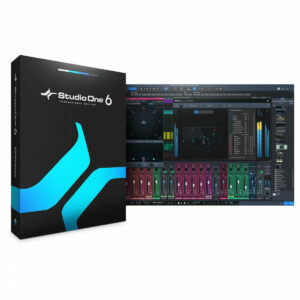 System Requirements
System Requirements
- Operating system: Windows 10 (64-bit only) or Windows 11 (64-bit only)
- Processor: Intel Core i3/AMD A10 processor or better
- RAM: Minimum 4 GB RAM / Recommended 8 GB or more
- Disc space: 40GB
- Resolution: Monitor with 1366 x768 resolution (Retina display recommended)
Pros
- Dedicated Mastering suite offers more in-depth processing than other DAWs
- Drag-and-drop interface provides unrivalled customisation
- Live streaming and live performance support
Cons
- Limited built-in FX and less scarce MIDI implementation
If you want everything Logic does and more, with more customisation, you want PreSonus Studio One 6.5. The drag-and-drop functionality is one of its main features, and this revolutionises the music production process by simplifying the integration of instruments, samples, and effects, enhancing creativity and efficiency.
It has a single-window workspace, which offers a streamlined and intuitive user experience, minimising distractions and allowing you to focus on the music.
The DAW’s robust feature set includes a suite of virtual instruments and effects, though not as sophisticated as Logic Pro’s, alongside powerful mixing and dedicated mastering not found anywhere else, let alone Logic Pro. This makes it particularly attractive for project studio owners and music producers looking for a versatile and capable workstation.
Studio One 6.5 also boasts an extensive online presence, with a wealth of tutorials and a supportive community. Whether you’re recording, producing, mixing, or mastering, Studio One 6.5 offers a seamless and user-friendly workflow that’s hard to beat, making it an excellent choice for Windows users seeking a high-quality DAW experience.
4. Bitwig Studio – The best DAW for creative freedom
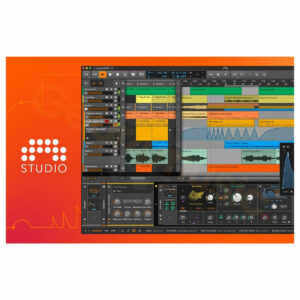 System Requirements
System Requirements
- Operating system: Windows 7 – 11 (64-bit)
- Processor: Dual-core AMD or Intel CPU or faster with SSE4.1 support
- RAM: Minimum 4 GB RAM
- Disc space: 12GB
- Resolution: Minimum 1280 x 768 pixel screen resolution
Pros
- Consistently upgraded with new modules and features
- Extensive range of included sounds, instruments and effects
- Create your own plugins and effects with the open “Grid” environment
Cons
- No video capabilities rule out any post-production applications
Particularly appealing for electronic artists, Bitwig Studio is a unique DAW, providing innovative tools for sound designers and musicians to experiment with. Its modular design environment, The Grid, enables users to build their own synths and effects from scratch, offering unparalleled flexibility in sound creation. This feature alone sets Bitwig Studio apart, providing a playground for experimentation not readily found in Logic Pro or other DAWs.
Bitwig Studio’s workflow is highly intuitive, supporting a fast, efficient creative process. The software’s interface is sleek and customizable, ensuring you can tailor the layout to fit your production style. With its robust support for MPE (MIDI Polyphonic Expression), Bitwig Studio offers advanced expressive capabilities for shaping sounds in dynamic, innovative ways that go beyond what’s on offer with Logic Pro.
Though fundamentally the same as Logic Pro, with the same recording and mixing functions, the application of Bitwig Studio is very different. An alternative in the sense that you could look at Bitwig and Logic Pro and assume they do two very different things. There is some truth in that, with Bitwig letting you express your creativity in a very different way from the traditional purpose of a DAW for music creation.
5. Ableton Live 11 Suite – The best alternative for electronic music
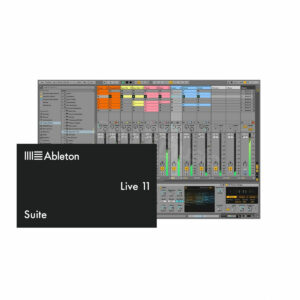 System Requirements
System Requirements
- Operating system: Windows 10 (version 22H2) or Windows 11 (version 22H2 or higher)
- Processor: 5th generation Intel® Core™ i5 processor or AMD Ryzen processor
- RAM: 8GB
- Disc space: 76GB for all sound content
- Resolution: 1366×768 display resolution
Pros
- Suitable for live performances
- Extremely well supported with Certified Ableton Tutors and extensive tutorials
- MPE support for advanced devices
Cons
- Lacks traditional audio editing tools
Where Logic Pro is a studio tool, Ableton Live 11 is entirely flexible for the studio or stage. MPE connectivity, unrivalled MIDI integration, and flexible routing to the overall interface design, Ableton’s ethos comes from a different standpoint to Logic Pro entirely.
It stands out with its dual-view interface: the traditional Arrangement View for linear sequencing and the innovative Session View for improvisational creativity, making it a versatile tool for artists and producers alike. This unique setup facilitates a fluid workflow, allowing you to experiment freely without disrupting your creative flow.
It’s also extremely easy to use, bolstered by a comprehensive range of tutorials and a supportive online community of both novices and professionals. This accessibility, combined with its robust feature set, makes Ableton Live 11 an ideal choice for those seeking a creative and efficient music production environment on Windows.
6. Image Line FL Studio Signature Bundle – The best loop-based DAW
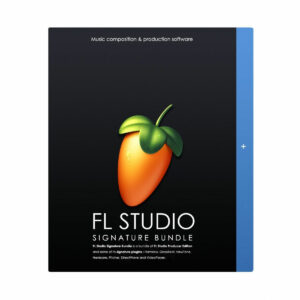 System Requirements
System Requirements
- Operating system: Windows 10, 11 or later
- Processor: Intel and AMD CPUs. ARM not supported
- RAM: 4GB
- Disc space: 4GB free disk space
- Resolution: 1366×768 display resolution
Pros
- Slick click-and-drag interface lets you create tracks in seconds
- Fantastic selection of included plugins
- Supported for life with free updates
Cons
- No notation editing, making it less useful for composers
FL Studio distinguishes itself from Logic Pro X with its intuitive user interface, making it particularly appealing to beginner music producers. This user-friendly design facilitates a smooth entry into music production, contrasting with Logic Pro X’s more professional interface, which, while offering advanced tools and features, might require a steeper learning curve.
FL Studio’s approachability does not detract from its capabilities, especially for those focused on electronic music genres.
The software is equipped with an impressive selection of built-in virtual instruments, including a variety of synthesizers, drums, and samplers. Although Logic Pro X boasts a broader suite of virtual instruments, encompassing guitars, basses, drums, and keyboards, FL Studio’s collection is adeptly curated for electronic music production.
Both DAWs offer robust mixing and mastering capabilities, but FL Studio’s built-in effects like reverb, delay, chorus, and distortion, alongside a comprehensive mixing and mastering wizard, equip users with a solid foundation for producing polished tracks.
Its streamlined workflow and focus on electronic music production make it a great choice for artists in that genre seeking a Windows-compatible DAW that offers something different from Logic Pro.
7. Reason 12 Music Production Software – The best DAW for building complex FX signal chains
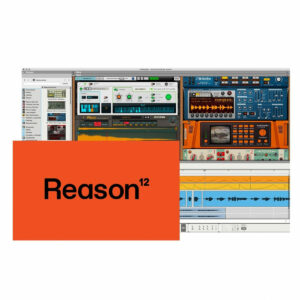 System Requirements
System Requirements
- Operating system: Windows 10 or later (64-bit)
- Processor: Intel or AMD multi-core processor
- RAM: 4 GB RAM (8 GB or more recommended for large ReFills or Rack Extensions)
- Disc space: 5.5 GB free system disk space required, plus 20 GB for optional content. Additionally, the program may use up to 20 GB disk space and additional space for cached graphical assets
- Resolution: 1280×768 resolution minimum
Pros
- Complex routing provides infinite number combinations between rack extensions
- VST3 support with virtual CV connectivity to add features to existing plugins
- Excellent SSL-modelled mixer
Cons
- Lacklustre audio editing tools
At the heart of Reason 12 is its rack-based modular environment, offering a visually intuitive and creative way for producers to build their tracks. If you’re an electronic musician who enjoys the tactile feel of patching and tweaking virtual cables and modules, this DAW is ideal for you as it’s reminiscent of working with physical hardware.
Unlike Logic Pro, Reason Studio 12 shines in its ability to simulate a real-world studio rack. It offers an extensive array of synthesizers, drum machines, and effects, all designed to be patched and combined in limitless ways. This encourages experimentation and can lead to unique sound design and texture creation that is particularly beneficial for electronic music production.
Moreover, Reason Studio 12 introduces new features like the Mimic Creative Sampler, enhancing the toolset for sample-based music creation and manipulation.
While Logic Pro provides a more traditional DAW workflow with a wide range of virtual instruments and a focus on comprehensive production tools, Reason Studio 12 appeals to those looking for a DAW that offers a hands-on, experimental approach to music production. Its focus on modular synthesis and creative sampling makes it a great choice for electronic musicians and producers seeking a distinctive and immersive production experience.
FAQs
Can I run Logic Pro on Windows?
Logic Pro is exclusive to macOS and cannot be run natively on Windows. This limitation is due to Logic Pro being developed by Apple specifically for their operating system. There are workarounds like virtual machines or Hackintosh setups, but they’re complex and not officially supported.
What is the equivalent of Logic Pro for Windows?
Cubase Pro 13 is the best alternative to Logic Pro on Windows. Utilising a similar and familiar layout with a comparable number of instruments and effects with excellent customisation options, Cubase is favoured by both producers and musicians.
What is the best DAW for beginners?
GarageBand is the best DAW for beginners, offering a user-friendly interface feature set. It’s free for Apple users and includes a huge selection of loops and instruments as well as recording features and a mobile app making it ideal for beginners.
Final thoughts
Logic Pro may take its place on the pantheon of the best DAWs but that doesn’t mean you can’t find the same functionality and flexibility in other Windows-compatible DAWs. Save yourself the technical and ethical headache of using software on non-licensed devices by looking at the diversity of other DAWs available, from Studio One’s drag-and-drop customisation to Bitwig’s unrestricted arranger window.
There’s something for everyone and after a short period of adjustment, you’ll find that you won’t be missing out on using Logic Pro for Windows. Want to know more about a specific DAW? Check out our article on the best DAWs and learn about the best reverb plugins to pair with your DAW.

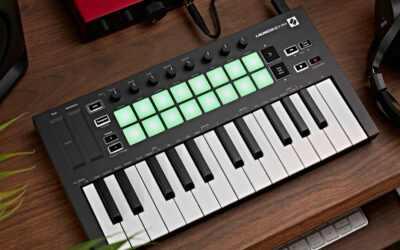
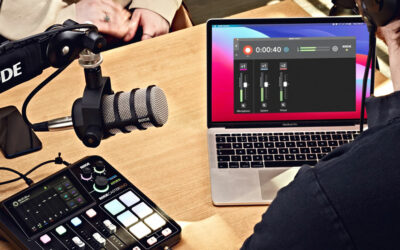


0 Comments